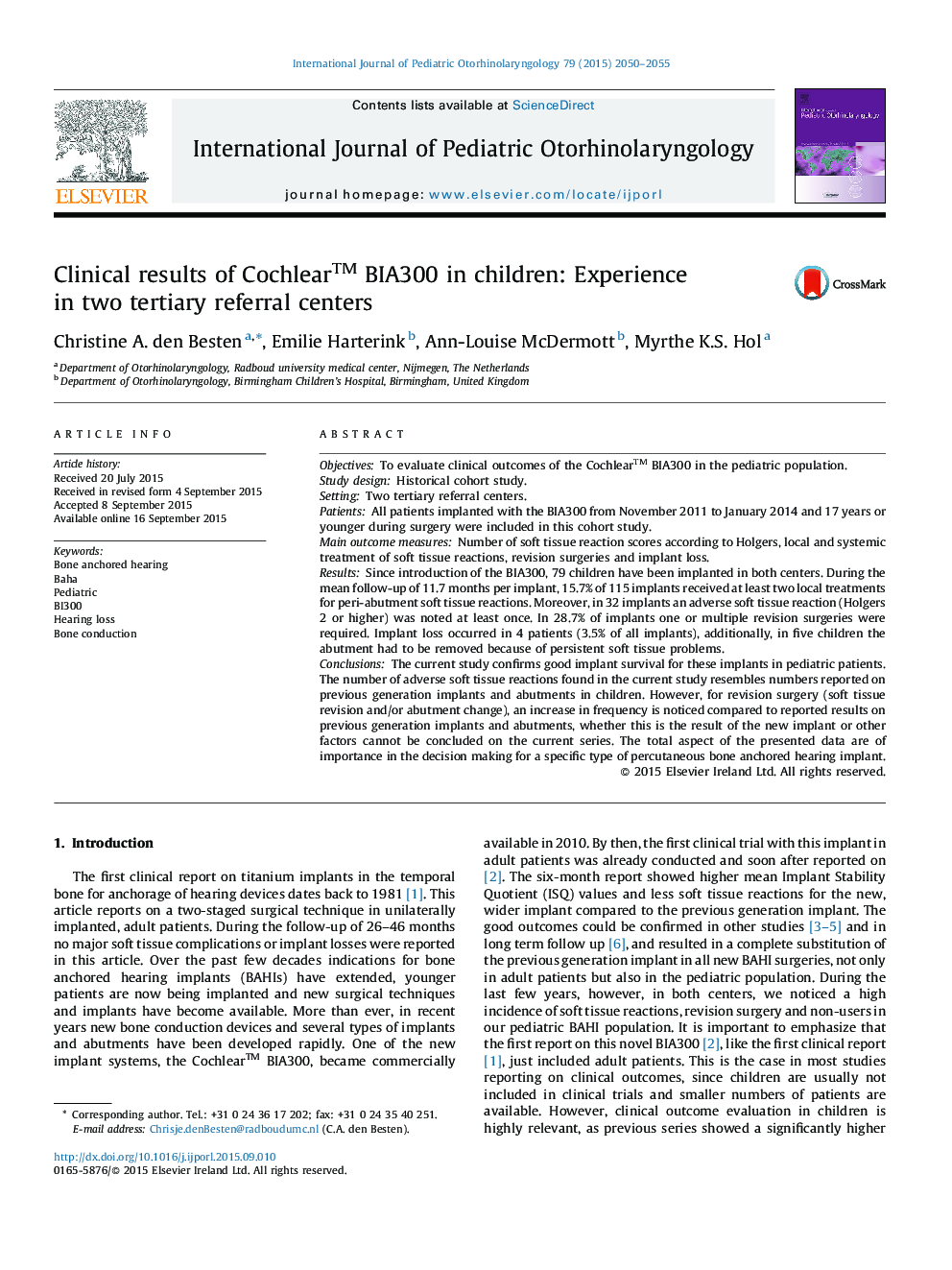| Article ID | Journal | Published Year | Pages | File Type |
|---|---|---|---|---|
| 4111558 | International Journal of Pediatric Otorhinolaryngology | 2015 | 6 Pages |
ObjectivesTo evaluate clinical outcomes of the Cochlear™ BIA300 in the pediatric population.Study designHistorical cohort study.SettingTwo tertiary referral centers.PatientsAll patients implanted with the BIA300 from November 2011 to January 2014 and 17 years or younger during surgery were included in this cohort study.Main outcome measuresNumber of soft tissue reaction scores according to Holgers, local and systemic treatment of soft tissue reactions, revision surgeries and implant loss.ResultsSince introduction of the BIA300, 79 children have been implanted in both centers. During the mean follow-up of 11.7 months per implant, 15.7% of 115 implants received at least two local treatments for peri-abutment soft tissue reactions. Moreover, in 32 implants an adverse soft tissue reaction (Holgers 2 or higher) was noted at least once. In 28.7% of implants one or multiple revision surgeries were required. Implant loss occurred in 4 patients (3.5% of all implants), additionally, in five children the abutment had to be removed because of persistent soft tissue problems.ConclusionsThe current study confirms good implant survival for these implants in pediatric patients. The number of adverse soft tissue reactions found in the current study resembles numbers reported on previous generation implants and abutments in children. However, for revision surgery (soft tissue revision and/or abutment change), an increase in frequency is noticed compared to reported results on previous generation implants and abutments, whether this is the result of the new implant or other factors cannot be concluded on the current series. The total aspect of the presented data are of importance in the decision making for a specific type of percutaneous bone anchored hearing implant.
